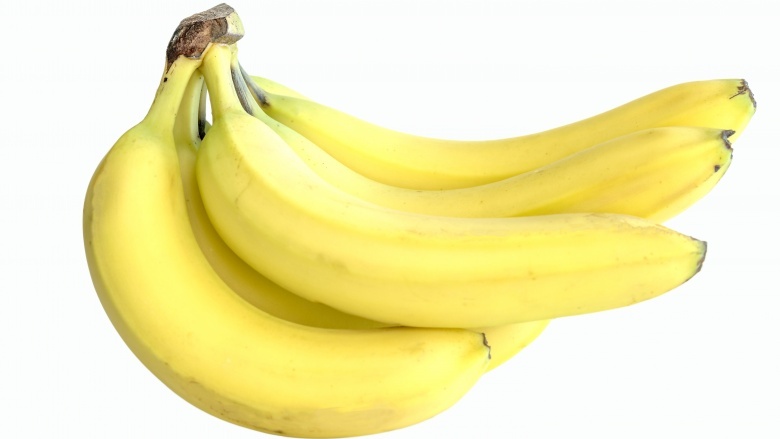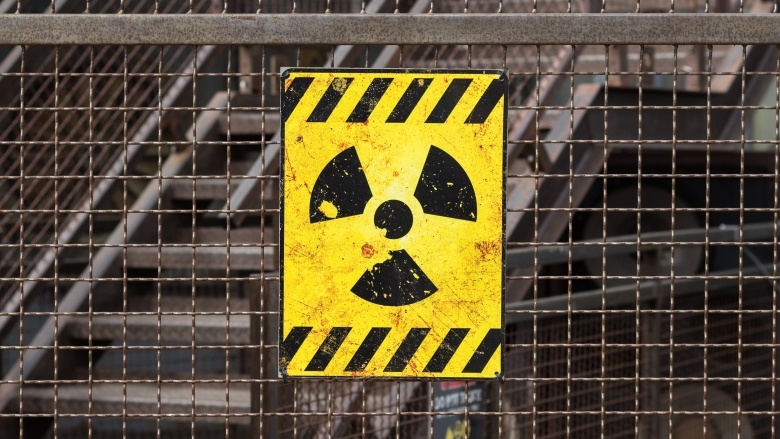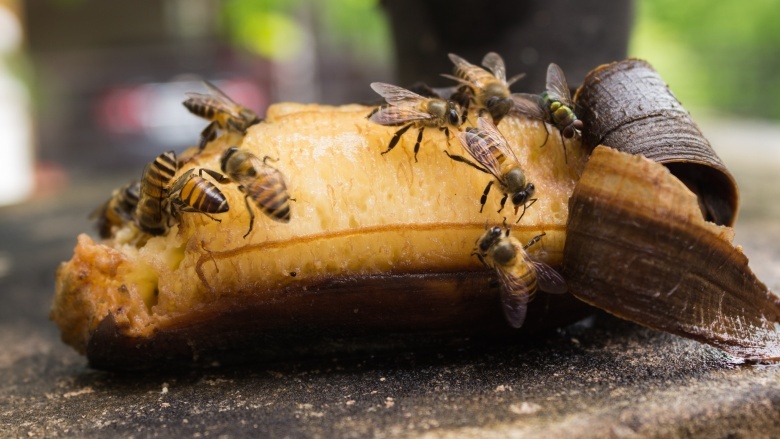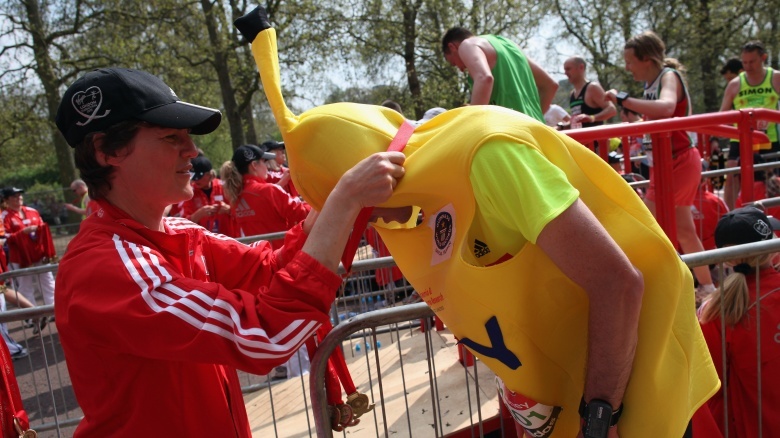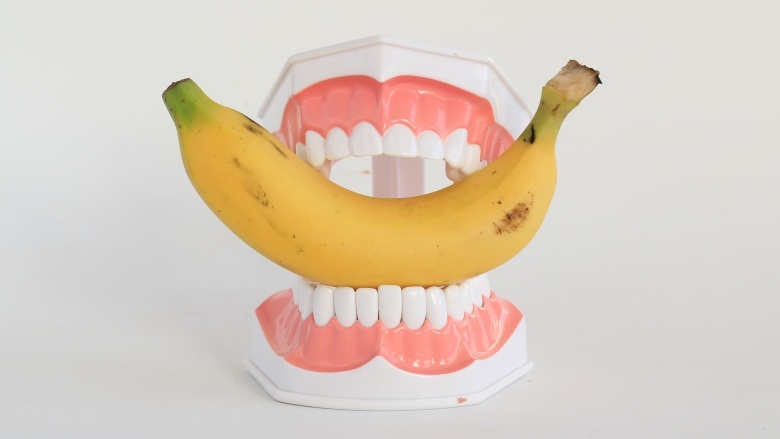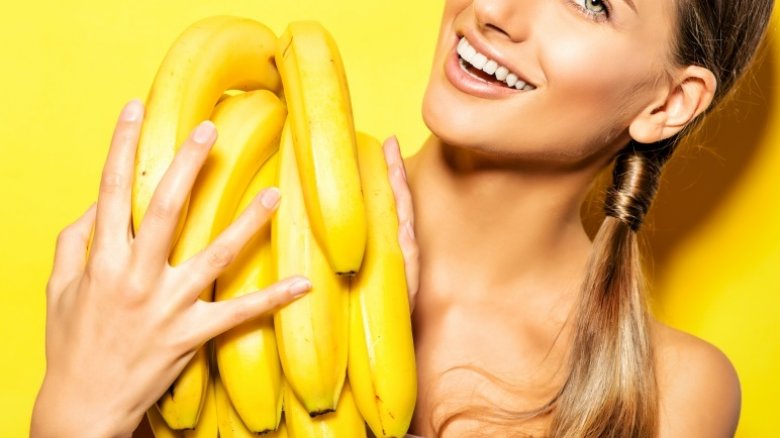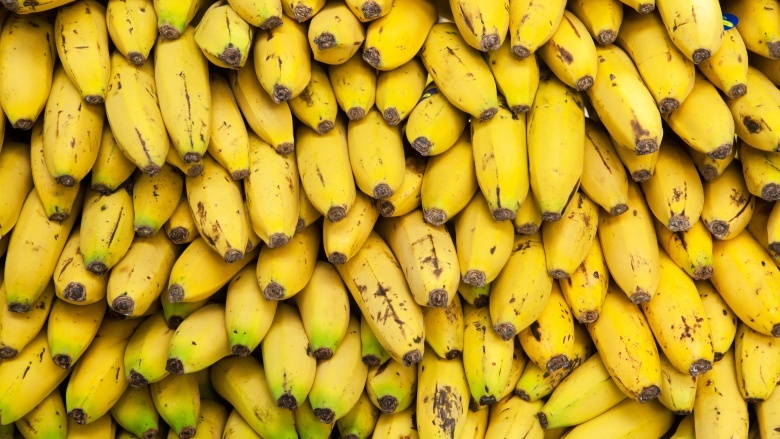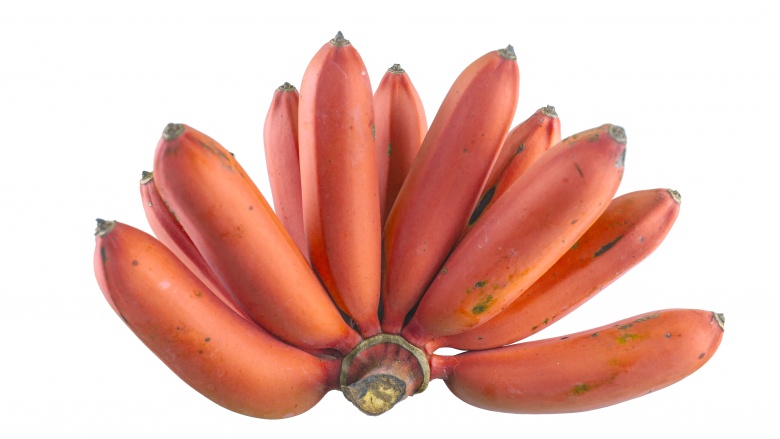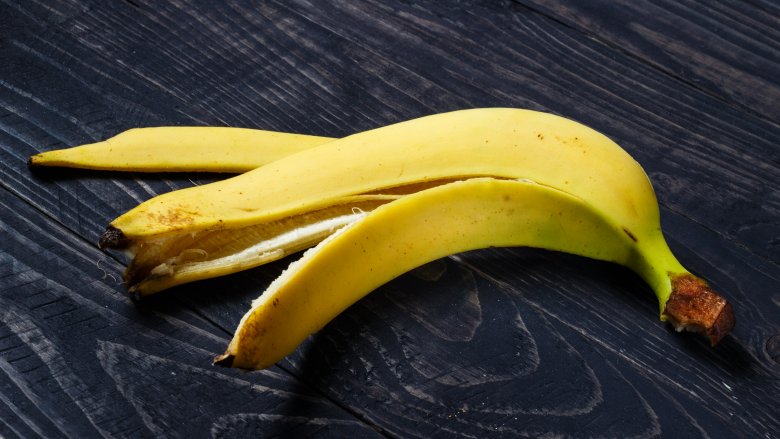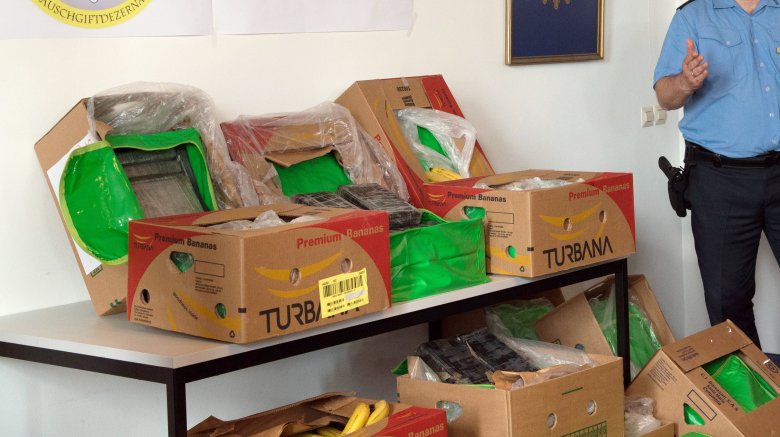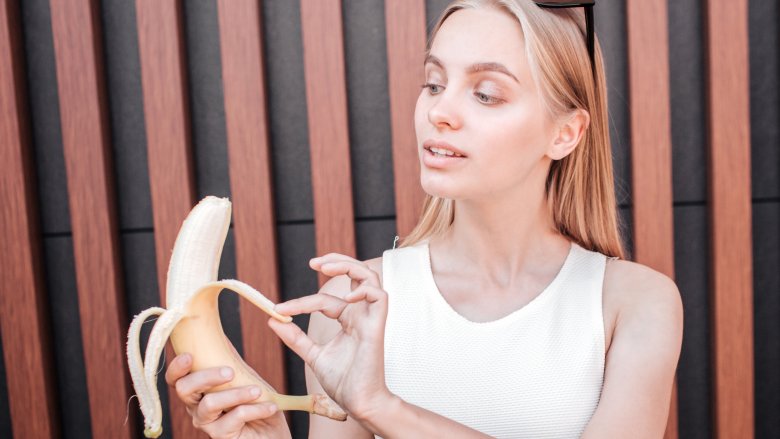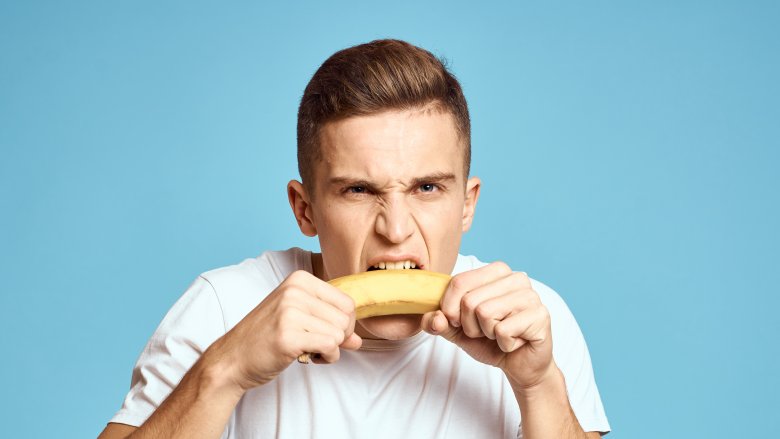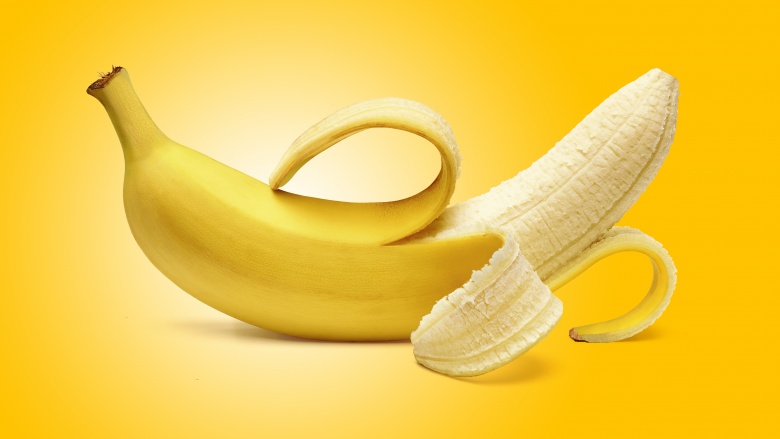Weird Banana Facts You Didn't Know
Ask anyone to name a weird fruit, and dollars to donuts they will say "banana," and that's just based on them being all yellow and bendy. But set aside its curious countenance (and associated pretend gun play and opportunities for slapstick comedy), and you might be amazed to find out that, when it comes to bananas, weird isn't skin deep.
Bananas are radioactive!
It's well known that bananas contain large amounts of potassium, good for all sorts of important bodily functions. What is less well known is that a small proportion of that potassium is the unstable radioactive isotope potassium-40, which is sliding down your throat alongside the regular potassium every time you chow down on the infamous bent fruit.
However, before you get any ideas about overindulging on bananas in pursuit of superpowers, be warned that it's next to impossible to get a significant dose of radiation from banana consumption. Using calculations based upon the so-called "Banana Equivalent Dose," you would need to find space in your stomach for 10 million bananas in a single sitting, in order to give yourself a lethal (or superpower-inducing) dose of radiation. On the off-chance that you do attempt that mission, you're probably going to experience some significant (and probably fatal) non-radiation-related side effects long before you peel the last yellow tube, including a banana peel slip to end all banana peel slips.
Bananas make bees mad
Isopentyl acetate is an organic compound that can be found in bananas, in synthetic banana flavors, and also in the pheromones of bees. Bees and other insects rely heavily on pheromones to communicate (not to mention some pretty radical dancing), and when threatened, one of the messages they send with pheromones is "ATTACK!" Isopentyl acetate is just one ingredient of the attack pheromone, but it is a pungent one, which is why after a bee stings, you'll often detect a banana-like smell around the sting. The chemical is strongest in fresh bananas, but fades as the fruit ripens, so if you are unable to avoid eating a banana around bees, best go for a brown one, just in case.
Pretty fast for a fruit
Running 26.2 miles in one go is pretty impressive by anyone's standards (unless you run ultra-marathons on a regular basis), and it will come as no surprise that runners often consume bananas to top up their energy as they race toward the cheap medal and T-shirt waiting for them at the finish. But while most people follow the usual practice of putting the banana inside them to gain the benefits, a few people decided to try it the other way round and climbed inside the banana instead ... or at least, they dressed as one.
Running dressed as a banana is enough of a thing that Guinness World Records tracks the times these fitness fruits take to finish—the current record is held by Andrew Lawrence from the UK, who on April 24, 2016, ran the London Marathon in 2 hours 47 minutes and 41 seconds. That seems like a long time to spend in a banana costume, even if you aren't running, panting, and sweating uncontrollably while you wear it.
Good for your smile
Bananas will make you smile for a number of reasons: they're tasty, funny-looking, healthy (if that makes you smile), and good for physical comedy. But they can make you smile better too, because potassium, which bananas have in spades, can be used to whiten your teeth. To make this work, start with a barely-ripe, slightly-green banana, and peel off the skin. Since the skin on a slightly green banana is also loaded with potassium, you can take a small piece and rub it all over your teeth for a couple of minutes before you brush them. The soft stuff on the inside of your skin should come off on your teeth, and the rubbing action will help it get inside the cracks—you want to cover as much of your teeth as possible. After two minutes, you can brush your teeth as normal, and after about two weeks, your teeth should start to dazzle everyone you point them at.
Note: in the absence of actual bananas, banana-flavored candy is NOT an effective substitute, no matter how tasty it is.
We're bananas for bananas
If you're reading this, it's probably safe to assume you like bananas. The average American eats roughly 25 pounds of bananas a year which, depending on the size of the bananas you buy, means you could be eating as many as 100 bananas per year, which would work out to around two every week. Some people eat way more bananas than that, obviously. (That's how you get averages.)
However, even when focusing on the most enthusiastic banana-browsers, America doesn't even come close to eating the most. That honor goes to Uganda, where they eat around 420 pounds of bananas per year on average. Ugandans eat so many bananas that their word for food, "matooke," is also the name for a common banana-based dish. Uganda is the largest producer of bananas in sub-Saharan Africa, so it's not really a surprise that they would eat a lot of what they grow. But to eat that many? They must be really, really, bananas for bananas.
They all look the same, because they ARE all the same
Can you remember the first banana you ever ate? How about the most recent one? Well you might be surprised to learn that it doesn't matter if the gap between your first and most recent banana is six or sixty years — genetically they were the same banana. That's because most of the bananas we eat in the West are known as Cavendish bananas, and they are all infertile. You can't just plant a seed to get a new plant. Instead you have to cut a piece from another plant and grow it separately. Those two plants, and their fruit, will be genetically identical.
Clones are pretty cool, and they make for good science fiction, but in the case of bananas there's a serious downside. Before the Cavendish became top banana, the Gros Michel was the banana boss. Unfortunately, a fungus came along and took a liking to Gros Michel, and since they were clones, the fungus liked them all. As a result, the Gros Michel was wiped out in the 1950s and the Cavendish took its place. Cavendish bananas are just as susceptible to disease as the Gros Michel was, and that could mean the end of the bananas you're used to.
Bananas aren't always yellow
You might freak out at the idea of a red banana, but they do exist. Red bananas are part of the Musa acuminata species, though the "red" label serves as a catch-all descriptive term; bananas of this kind can range in color from pink to bright purple.
So why don't we see all these fun bananas at the local grocery store? According to the Washington Post, after decades of only seeing yellow bananas in our stores, many Americans aren't interested in non-yellow 'nanners. How do red bananas taste? When they aren't ripe, they tend to taste very bitter, with a starchy texture. If that's not what you're expecting, it can be an unpleasant shock. For a fruitier flavor, you'll want to make sure to grab a fully ripened red banana, which tends to be very sweet and creamy. Some actually compare the flavor to strawberry banana, while others note a "hint of raspberry" flavor.
You're probably opening bananas wrong
Banana stems tend to throw us off about the delicious fruit. Because the stems are the easiest way to carry bunches of bananas around, we tend to think of that part of the fruit as being the top. Instead, it turns out the stem is the bottom of the banana — bananas grow "upside-down" if you look at them on the tree.
Regardless, the stem looks like a handle and seems like a good way to peel the banana, but that route is actually the least efficient way to peel. Some bananas just refuse to be peeled, leaving you with mashed banana all over your hands by the time you're done. Avoiding that is as simple as peeling the banana the way monkeys do. Pinch the little black seed at the end of the banana and peel away.
Banana republic
It should be fairly obvious, but if you look into the banana box at the grocery store and the things you see in that box are not bananas, you should be really careful about taking whatever it is home and making a smoothie out of it. See, sometimes smugglers use banana boxes to hide shipments of illegal drugs, like cocaine. Bricks of cocaine are relatively unlikely to make it to store shelves because the people who are supposed to be getting those shipments are usually highly motivated to actually get their product, but it has happened. In 2015, Aldi employees at several stores in Berlin found cocaine bricks packed in their banana boxes, according to the BBC, and the same thing had happened at Aldi Berlin stores about a year earlier, too.
In September 2018, the Texas Department of Criminal Justice received a donation of 45 boxes of bananas that were already ripe and needed to be eaten quickly. But when two sergeants attempted to pick up the yellow fruit, they found white candy instead. Packed between layers of bananas in the shipment were 540 bricks of cocaine, worth around $18 million on the street. It's a good thing that little surprise didn't make it to the prisons.
Banana peels are great for skin problems
Don't throw away your banana peels! As revealed in an infographic created by Sustainable America, there are quite a few uses for leftover peels. For instance, you can use them as food for other plants. However, you can also use banana peels to treat "bug bites, poison ivy rashes, and psoriasis patches." Banana peels are even a popular choice for fighting acne.
Banana peels are so awesome for the skin thanks in large part to being packed with Vitamins A, B, C, and E, nutrients crucial to skin health. Banana peels also contain zinc, manganese, and iron, minerals that go a long way towards curing skin inflammation. So if you don't mind looking a little silly rubbing peels all over yourself, your skin could be baby smooth in no time. As with many folk remedies, your mileage may vary, but it could be worth a shot.
They're also great for headaches
Some people swear by bananas as a quick and cheap cure for headaches. Headache sufferers are instructed to use banana peels in the following way:
– Take a banana, peel it, and slice the peel in two.
– Using an adhesive, tape one half the peel to your forehead.
– Tape the other half of the peel to the back of your head.
– Lie down, relax, and try not to think about how foolish you look.
The headache is said to dissipate in a matter of minutes. The "cure" sounds miraculous, but the science behind it is rather simple. One reader wrote to Chicago Tribune columnist Ann Landers to suggest that what the banana peel might actually be treating is a potassium deficiency that you might not be aware of. If that's the case, this could also be solved by, you know, eating more bananas, but if you're not hungry, maybe peel-on-head will do the trick. Again, your mileage may vary. If you're desperate, it probably can't hurt.
They can fight depression and help you sleep
Could it be that we love bananas not only because they taste delicious, but because they make us feel good? Laura Flores, a San Diego-based nutritionist, shared with LiveScience that bananas can elevate your mood and help fight depression. It's all thanks to "high levels of tryptophan, which the body converts to serotonin, the mood-elevating brain neurotransmitter."
If that's not awesome enough, the magnesium in bananas can relax muscles, while the vitamin B6 inside helps you get a good night's sleep. That's probably also thanks to the tryptophan, as anyone who overdid it at Thanksgiving can testify.
